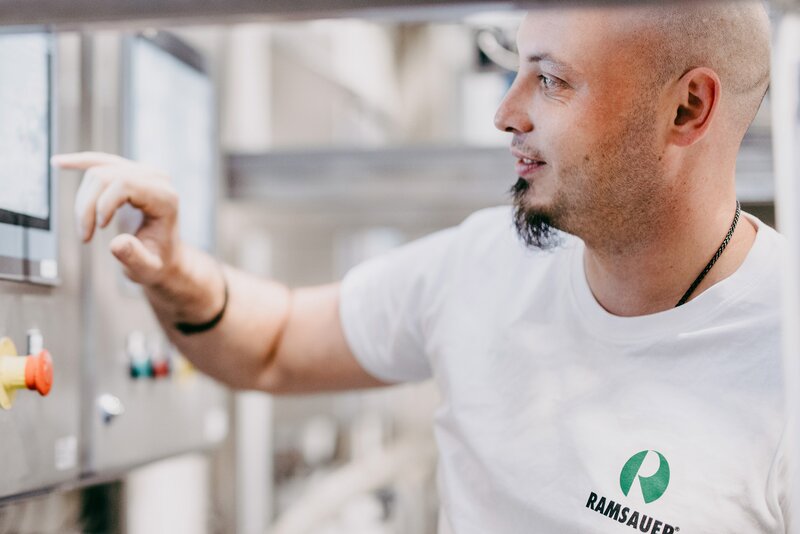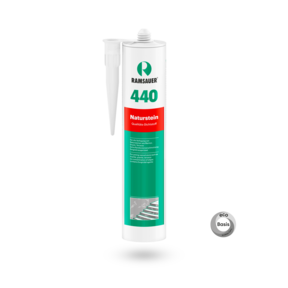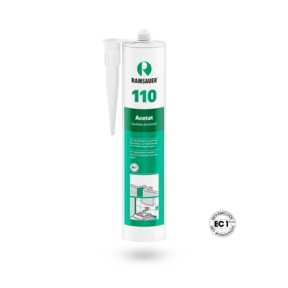
Every professional group – whether in medicine, geology, building and construction, carpentry, painting or glazing – has its own "technical jargon". This is used to communicate without difficulty within the specialist field. We would like to introduce you to some of the technical terms by means of excerpts from the glossary of terms of the German Industrial Association for Sealants (Industrieverband Dichtstoffe, IVD). The complete glossary can be obtained from us or directly from the IVD. It contains the German original terms as well as English and French translations.
A
Positioning suitable substances in a joint to prevent the penetration of moisture and/or air between building elements, building components and building parts made of the same or different construction materials. (DIN EN 26927:1990)
Process to press the sealant into the joint after application to ensure adhesion between the sealant and the joint edges and to improve the appearance of the joint surface. (DIN EN 26927:1990)
Minimum waiting time after application of a primer until the sealant is applied.
(DIN EN 26927:1990)
Detachment of the sealant from the adhesion surface of the substrate (DIN EN 26927:1990) Loss of adhesion
B
The property of a substance, e.g. primer, adhesive or sealant, to spread (flow) on the surface of the intended adhesion surface. Adhesion can only be effective on wetted surfaces.
Maximum movement accommodation
Maximum elongation of a sealant in the joint that leads to fracture (destruction) of the cohesion in the sealant material or adhesion. The elongation at break must under no circumstances be equated with the maximum movement accommodation.
D
Allocation of the yield stress
of a sealant at a certain relative elongation to this relative elongation. (DIN EN 26927:1990)
With a triangle chamfer, the two adhesion surfaces of the sealant meet in the apex of a triangle.
Three-point adhesion occurs when the sealant bonds with the joint base, which hinders sealant deformation for movement compensation.
F
Sealants that are tested according to certain quality standards, e.g. DIN 18545, are checked at regular intervals by neutral monitoring bodies for compliance with the quality requirements.
Intentional or tolerance-related space between components (DIN 52460:2000)
Lateral limitation of the joint width (DIN 52450:2000)
H
See primer
Material placed in the joint to limit the thickness of the sealant that thus determines the back profile of the sealant. (DIN EN 26927:1990)
K
Fracture within the sealant (DIN EN 26927:1990)
M
A raw material used in the production of sealants.
P
A substance composed of molecules in which one or more types of atoms or groups of atoms are repeatedly strung together.
Material used to coat the surface of the joint edges, which is applied before the sealant is applied to ensure its adhesion. (DIN EN 26927:1990)
See flash-off time of the primer
S
A measuring method for the rubber industry that is applied to vulcanised rubber compounds. Only suitable for testing sealants to a limited extent and with major limitations because the time of "vulcanisation" cannot be determined.
(DIN 53505)
The specific gravity describes the ratio of the mass to its volume. Example: 1.2 g / ml = 1 millilitre (cm3) weighs 1.2 g.
V
In macromolecular chemistry (chemistry that deals with large molecules), vulcanisation is the spatial connection of polymer chains to each other to form a vulcanised polymer. This vulcanisation is also the cause of the solidification of chemically reacting sealants, e.g. silicone sealants.
Term for the assessment of the flow behaviour of liquids and pastes.
Z
Maximum force measured when a construction material is elongated.
Total of elongation, compression, shearing action within which the joint seal retains its functionality.
(DIN 52460:2000)


